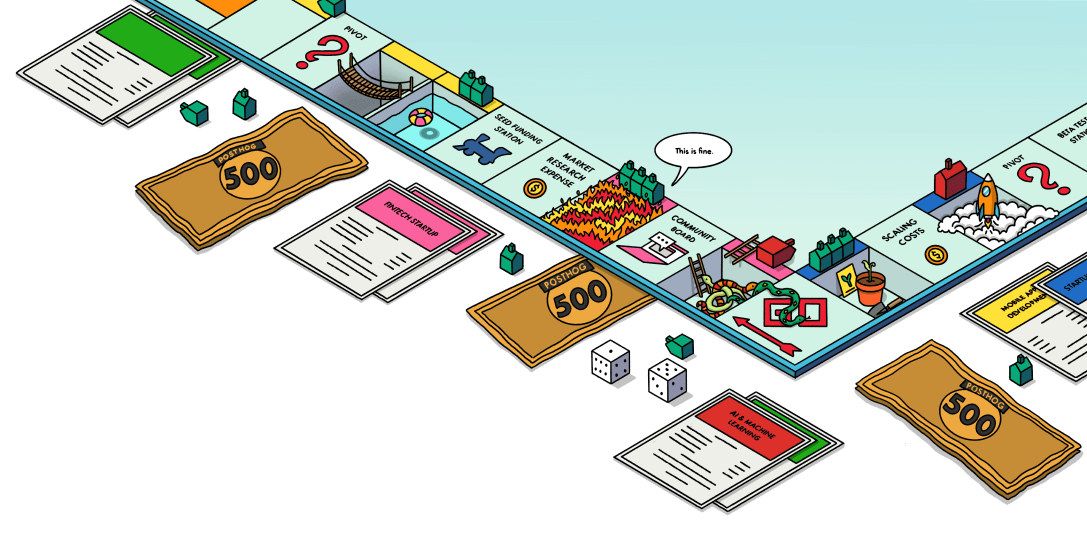Python
Contents
The Python SDK makes it easy to capture events, evaluate feature flags, track errors, and more in your Python apps.
Python 3.9 is no longer supported for PostHog Python SDK versions 7.x.x and higher.
Installation
Version 6.x of the PostHog Python SDK introduces a new contexts API and breaking changes. If you're upgrading from 5.x to 6.x, read the migration guide first to learn more.
In your app, import the posthog library and set your project API key and host before making any calls.
Note: As a rule of thumb, we do not recommend having API keys in plaintext. Setting it as an environment variable is best.
You can find your project API key and instance address in the project settings page in PostHog.
Capturing events
You can send custom events using capture:
Tip: We recommend using a
[object] [verb]format for your event names, where[object]is the entity that the behavior relates to, and[verb]is the behavior itself. For example,project created,user signed up, orinvite sent.
Tip: You can define event schemas with typed properties and generate type-safe code using schema management.
Setting event properties
Optionally, you can include additional information with the event by including a properties object:
Sending page views
If you're aiming for a backend-only implementation of PostHog and won't be capturing events from your frontend, you can send pageviews from your backend like so:
Person profiles and properties
The Python SDK captures identified events if the current context is identified or if you pass a distinct ID explicitly. These create person profiles. To set person properties in these profiles, include them when capturing an event:
For more details on the difference between $set and $set_once, see our person properties docs.
To capture anonymous events without person profiles, set the event's $process_person_profile property to False. Events captured with no context or explicit distinct_id are marked as personless, and will have an auto-generated distinct_id:
Alias
Sometimes, you want to assign multiple distinct IDs to a single user. This is helpful when your primary distinct ID is inaccessible. For example, if a distinct ID used on the frontend is not available in your backend.
In this case, you can use alias to assign another distinct ID to the same user.
We strongly recommend reading our docs on alias to best understand how to correctly use this method.
Contexts
The Python SDK uses nested contexts for managing state that's shared across events. Contexts are the recommended way to manage things like "which user is taking this action" (through identify_context), rather than manually passing user state through your apps stack.
When events (including exceptions) are captured in a context, the event uses the user distinct ID, session ID, and tags that are (optionally) set in the context. This is useful for adding properties to multiple events during a single user's interaction with your product.
You can enter a context using the with statement:
Contexts are persisted across function calls. If you enter one and then call a function and capture an event in the called function, it uses the context tags and session ID set in the parent context:
Contexts are nested, so tags added to a parent context are inherited by child contexts. If you set the same tag in both a parent and child context, the child context's value overrides the parent's at event capture (but the parent context won't be affected). This nesting also applies to session IDs and distinct IDs.
You can disable this nesting behavior by passing fresh=True to new_context:
Note: Distinct IDs, session IDs, and properties passed directly to calls to
captureand related functions override context state in the final event captured.
Contexts and user identification
Contexts can be associated with a distinct ID by calling posthog.identify_context:
Within a context associated with a distinct ID, all events captured are associated with that user. You can override the distinct ID for a specific event by passing a distinct_id argument to capture:
It's recommended to pass the currently active distinct ID from the frontend to the backend, using the X-POSTHOG-DISTINCT-ID header. If you're using our Django middleware, this is extracted and associated with the request handler context automatically.
You can read more about identifying users in the user identification documentation.
Contexts and sessions
Contexts can be associated with a session ID by calling posthog.set_context_session. Session IDs must be UUIDv7 strings.
If you're using the PostHog JavaScript Web SDK on your frontend, it generates a session ID for you.
You can pass it to your backend by adding your backend domain to __add_tracing_headers in your config. This will automatically add tracing headers to your requests.
Alternatively, you can retrieve it on the frontend by calling posthog.get_session_id(). You then need to pass that session ID to your backend by setting the X-POSTHOG-SESSION-ID header on each fetch request.
You need to extract the header in your request handler (if you're using our Django middleware integration, this happens automatically).
If you associate a context with a session, you'll be able to do things like:
- See backend events on the session timeline when viewing session replays
- View session replays for users that triggered a backend exception in error tracking
You can read more about sessions in the session tracking documentation.
Exception capture
By default exceptions raised within a context are captured and available in the error tracking dashboard. You can override this behavior by passing capture_exceptions=False to new_context:
Decorating functions
The SDK exposes a function decorator. It takes the same arguments as new_context and provides a handy way to mark a whole function as being in a new context. For example:
Group analytics
Group analytics allows you to associate an event with a group (e.g. teams, organizations, etc.). Read the Group Analytics guide for more information.
Note: This is a paid feature and is not available on the open-source or free cloud plan. Learn more on our pricing page.
To capture an event and associate it with a group:
To update properties on a group:
The name is a special property which is used in the PostHog UI for the name of the group. If you don't specify a name property, the group ID will be used instead.
Feature flags
PostHog's feature flags enable you to safely deploy and roll back new features as well as target specific users and groups with them.
There are 2 steps to implement feature flags in Python:
Step 1: Evaluate the feature flag value
Boolean feature flags
Multivariate feature flags
Step 2: Include feature flag information when capturing events
If you want use your feature flag to breakdown or filter events in your insights, you'll need to include feature flag information in those events. This ensures that the feature flag value is attributed correctly to the event.
Note: This step is only required for events captured using our server-side SDKs or API.
There are two methods you can use to include feature flag information in your events:
Method 1: Include the $feature/feature_flag_name property
In the event properties, include $feature/feature_flag_name: variant_key:
Method 2: Set send_feature_flags to true
The capture() method has an optional argument send_feature_flags, which is set to false by default. This parameter controls whether feature flag information is sent with the event.
Basic usage
Setting send_feature_flags to True will include feature flag information with the event:
Advanced usage (v6.3.0+)
As of version 6.3.0, send_feature_flags can also accept a dictionary for more granular control:
Performance considerations
With local evaluation: When local evaluation is configured, setting
send_feature_flags: Truewill not make additional server requests. Instead, it uses the locally cached feature flags, and it provides an interface for including person and/or group properties needed to evaluate the flags in the context of the event, if required.Without local evaluation: PostHog will make an additional request to fetch feature flag information before capturing the event, which adds delay.
Breaking change in v6.3.0
Prior to version 6.3.0, feature flags were automatically sent with events when using local evaluation, even when send_feature_flags was not explicitly set. This behavior has been removed in v6.3.0 to be more predictable and explicit.
If you were relying on this automatic behavior, you must now explicitly set send_feature_flags=True to continue sending feature flags with your events.
Fetching all flags for a user
You can fetch all flag values for a single user by calling get_all_flags() or get_all_flags_and_payloads().
This is useful when you need to fetch multiple flag values and don't want to make multiple requests.
Sending $feature_flag_called events
Capturing $feature_flag_called events enable PostHog to know when a flag was accessed by a user and thus provide analytics and insights on the flag. By default, we send a these event when:
- You call
posthog.get_feature_flag()orposthog.feature_enabled(), AND - It's a new user, or the value of the flag has changed.
Note: Tracking whether it's a new user or if a flag value has changed happens in a local cache. This means that if you reinitialize the PostHog client, the cache resets as well – causing
$feature_flag_calledevents to be sent again when callingget_feature_flagorfeature_enabled. PostHog is built to handle this, and so duplicate$feature_flag_calledevents won't affect your analytics.
You can disable automatically capturing $feature_flag_called events. For example, when you don't need the analytics, or it's being called at such a high volume that sending events slows things down.
To disable it, set the send_feature_flag_events argument in your function call, like so:
Advanced: Overriding server properties
Sometimes, you may want to evaluate feature flags using person properties, groups, or group properties that haven't been ingested yet, or were set incorrectly earlier.
You can provide properties to evaluate the flag with by using the person properties, groups, and group properties arguments. PostHog will then use these values to evaluate the flag, instead of any properties currently stored on your PostHog server.
For example:
Overriding GeoIP properties
By default, a user's GeoIP properties are set using the IP address they use to capture events on the frontend. You may want to override the these properties when evaluating feature flags. A common reason to do this is when you're not using PostHog on your frontend, so the user has no GeoIP properties.
You can override GeoIP properties by including them in the person_properties parameter when evaluating feature flags. This is useful when you're evaluating flags on your backend and want to use the client's location instead of your server's location.
The following GeoIP properties can be overridden:
$geoip_country_code$geoip_country_name$geoip_city_name$geoip_city_confidence$geoip_continent_code$geoip_continent_name$geoip_latitude$geoip_longitude$geoip_postal_code$geoip_subdivision_1_code$geoip_subdivision_1_name$geoip_subdivision_2_code$geoip_subdivision_2_name$geoip_subdivision_3_code$geoip_subdivision_3_name$geoip_time_zone
Simply include any of these properties in the person_properties parameter alongside your other person properties when calling feature flags.
Request timeout
You can configure the feature_flags_request_timeout_seconds parameter when initializing your PostHog client to set a flag request timeout. This helps prevent your code from being blocked in the case when PostHog's servers are too slow to respond. By default, this is set at 3 seconds.
Error handling
When using the PostHog SDK, it's important to handle potential errors that may occur during feature flag operations. Here's an example of how to wrap PostHog SDK methods in an error handler:
Local evaluation
Evaluating feature flags requires making a request to PostHog for each flag. However, you can improve performance by evaluating flags locally. Instead of making a request for each flag, PostHog will periodically request and store feature flag definitions locally, enabling you to evaluate flags without making additional requests.
It is best practice to use local evaluation flags when possible, since this enables you to resolve flags faster and with fewer API calls.
For details on how to implement local evaluation, see our local evaluation guide.
Distributed environments
In multi-worker or edge environments, you can implement custom caching for flag definitions using Redis, Cloudflare KV, or other storage backends. This enables sharing definitions across workers and coordinating fetches. See our guide for local evaluation in distributed environments for details.
Experiments (A/B tests)
Since experiments use feature flags, the code for running an experiment is very similar to the feature flags code:
It's also possible to run experiments without using feature flags.
LLM analytics
Our Python SDK includes a built-in LLM analytics feature. It enables you to capture LLM usage, performance, and more. Check out our analytics docs for more details on setting it up.
Error tracking
You can autocapture exceptions by setting the enable_exception_autocapture argument to True when initializing the PostHog client.
You can also manually capture exceptions using the capture_exception method:
Contexts automatically capture exceptions thrown inside them, unless disable it by passing capture_exceptions=False to new_context().
Code variables capture
The Python SDK can automatically capture the state of local variables when an exception occurs. This gives you a debugger-like view of your application state at the time of the error:
You can configure which variables are captured, masked, or ignored. See the code variables documentation for detailed configuration options.
GeoIP properties
Before posthog-python v3.0, we added GeoIP properties to all incoming events by default. We also used these properties for feature flag evaluation, based on the IP address of the request. This isn't ideal since they are created based on your server IP address, rather than the user's, leading to incorrect location resolution.
As of posthog-python v3.0, the default now is to disregard the server IP, not add the GeoIP properties, and not use the values for feature flag evaluations.
You can go back to previous behaviour by doing setting the disable_geoip argument in your initialization to False:
The list of properties that this overrides:
$geoip_city_name$geoip_country_name$geoip_country_code$geoip_continent_name$geoip_continent_code$geoip_postal_code$geoip_time_zone
You can also explicitly chose to enable or disable GeoIP for a single capture request like so:
Debug mode
If you're not seeing the expected events being captured, the feature flags being evaluated, or the surveys being shown, you can enable debug mode to see what's happening.
You can enable debug mode by setting the debug option to True in the PostHog object. This will enable verbose logs about the inner workings of the SDK.
Disabling requests during tests
You can disable requests during tests by setting the disabled option to True in the PostHog object. This means no events will be captured or no requests will be sent to PostHog.
Connection configuration
The SDK uses HTTP connection pooling internally for better performance. These settings typically need not be changed, but in some environments, such as when running behind NAT gateways, pooled connections may be terminated non-gracefully, causing request failures.
You can configure connection behavior in several ways. The following settings should be called during initialization, before any API requests are made.
Enable TCP keepalive
TCP keepalive probes help prevent idle connections from being dropped by network infrastructure. This is the recommended approach for most cases where idle connections are terminated.
This enables TCP keepalive with sensible defaults (60 second idle time, 60 second probe interval, 3 probes before timeout).
Disable connection pooling
If you need each request to use a fresh connection, you can disable connection reuse entirely. This will incur additional overhead per request but may be desirable in some circumstances.
Custom HTTP socket options
For advanced use cases, you can configure arbitrary socket options on the underlying HTTP connection.
Pass None to set_socket_options() to reset to default behavior.
Historical migrations
You can use the Python or Node SDK to run historical migrations of data into PostHog. To do so, set the historical_migration option to true when initializing the client.
Serverless environments (Render/Lambda/...)
By default, the library buffers events before sending them to the capture endpoint, for better performance. This can lead to lost events in serverless environments, if the Python process is terminated by the platform before the buffer is fully flushed. To avoid this, you can either:
- Ensure that
posthog.shutdown()is called after processing every request by adding a middleware to your server. This allowsposthog.capture()to remain asynchronous for better performance.posthog.shutdown()is blocking. - Enable the
sync_modeoption when initializing the client, so that all calls toposthog.capture()become synchronous.
Django
See our Django docs for how to set up PostHog in Django. Our library includes a contexts middleware that can automatically capture distinct IDs, session IDs, and other properties you can set up with tags.
Alternative name
As our open source project PostHog shares the same module name, we created a special posthoganalytics package, mostly for internal use to avoid module collision. It is the exact same.
Thank you
This library is largely based on the analytics-python package.








